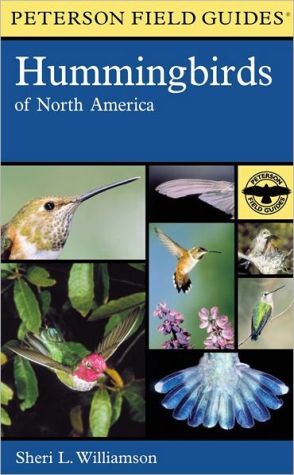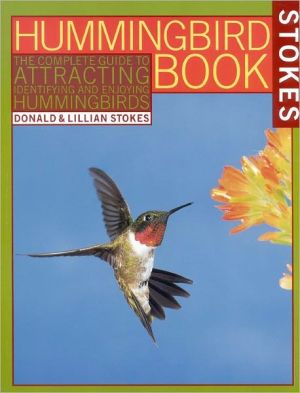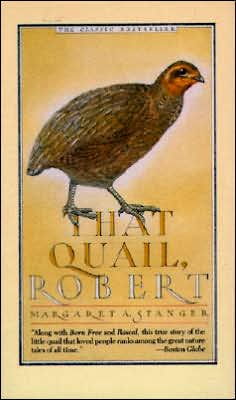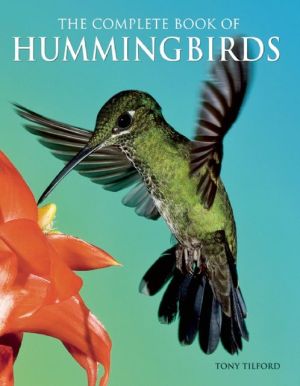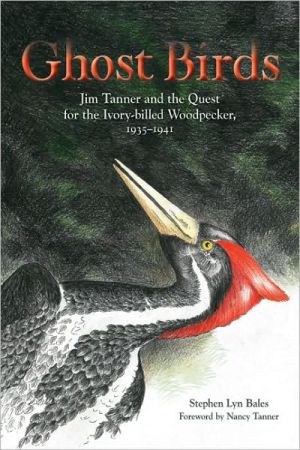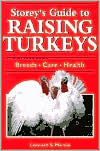A Field Guide to Hummingbirds of North America
Covering 31 North American species, with more than 250 color photos and 33 maps, this is the most comprehensive field guide to hummingbirds. Introductory chapters cover the natural history of hummingbirds, ways to attract and feed them, and major hot spots in the United States and Canada for observing these fascinating birds. The 31 color plates illustrate 28 species, 7 hybrid combinations, 3 forms of albinism, and 4 species of sphinx moths often mistaken for hummingbirds. Species accounts...
Search in google:
Covering 31 North American species, with more than 250 color photos and 33 maps, this is the most comprehensive field guide to hummingbirds. Introductory chapters cover the natural history of hummingbirds, ways to attract and feed them, and major hot spots in the United States and Canada for observing these fascinating birds. The 31 color plates illustrate 28 species, 7 hybrid combinations, 3 forms of albinism, and 4 species of sphinx moths often mistaken for hummingbirds. Species accounts provide in-depth information on plumage, molt, songs and calls, wing sounds, similar species, behavior, habitat, distribution, taxonomy, and conservation concerns. Detailed, up-to-date range maps show breeding, non-breeding, and year-round distribution, migration routes, and records outside expected areas of occurrence. For a few widespread migratory species, separate maps illustrate expected spring arrival dates. Birding Magazine - Rick Taylor Williamson's book is a comprehensive treatment, accurate enough to satisfy professionals and accessible to the lay reader.
WEDGE-TAILED SABREWING pl. 11 Campylopte rus curvipennis 4.755.25 in. (1213.5 cm). Bill length: male 2631 mm, female 2328 mm; tail length: male 4350 mm, female 3844 mm.\ This large hummingbird of eastern Mexico ranges north into southwestern Tamaulipas, the presumed origin of several other tropical species that have strayed into southern Texas; the potential exists for occurrence north of the Mexican border. The species gets its name from the modified shafts of its outer primaries, which are dramatically thickened and curved in adult males, less so in immature males and adult females. The function of this feature is unknown, though it may play a role in sound production or visual signaling during courtship displays.\ Description A large hummingbird with a long wedge-shaped or graduated tail, the central pair of feathers being much longer than the outer pair and extending well beyond the wingtips. Upperparts are bright green to emerald green, with blue to violet-blue crown blending with green of nape. White spot behind eye contrasts strongly with dark gray cheek. Underparts are pale gray to whitish, often slightly darker laterally; undertail coverts may show buffy wash. Bill is long, straight to slightly decurved; lower mandible is pinkish at base. Sexes are similar. ADULT MALE: Very large, with metallic deep blue to violet- blue crown blending with bright green on nape. Shafts of outer primaries extremely broad, flattened and curved near base. Tail green above with increasing dark suffusion toward tips of outer feathers. R45 mostly blackish, often with faint paler mottling at tip. ADULT FEMALE: Similar to male but smaller, with less extensive satiny deep blue to violet-blue on crown. Tail similar to male’s, but usually with faint lighter mottling or well-defined light gray tips on R35. IMMATURE MALE: Similar to adult male but crown duller, usually some pale mottling in outer tail feathers. IMMATURE FEMALE: Similar to adult female but crown very dull blue, light gray tips on R35 usually large, well defined. Immatures of both sexes may show buffy wash on underparts as well as pale edges on feathers of upperparts.\ Text copyright © 2001 by Sheri L. Williamson. Reprinted by permission of Houghton Mifflin Company.
List of Plates ixIntroduction 1 What Is a Hummingbird? 5 Natural History of North American Hummingbirds 8 Watching Hummingbirds 33 How to Identify Hummingbirds 39 Parts of a Hummingbird 42 How to Use This Book 43 PLATES 49SPECIES ACCOUNTS 113 Wedge-tailed Sabrewing 115 Green Violet-ear 118 Green-breasted Mango 122 Antillean Crested Hummingbird 126 Golden-crowned Emerald 128 Canivet’s Emerald 130 Cuban Emerald 132 Broad-billed Hummingbird 136 White-eared Hummingbird 141 Xantus’s Hummingbird 145 Berylline Hummingbird 148 Rufous-tailed Hummingbird 151 Buff-bellied Hummingbird 154 Cinnamon Hummingbird 158 Azure-crowned Hummingbird 160 Violet-crowned Hummingbird 163 Amethyst-throated Hummingbird 166 Blue-throated Hummingbird 169 Magnificent Hummingbird 174 Plain-capped Starthroat 178 Bahama Woodstar 181 Lucifer Hummingbird 184 Ruby-throated Hummingbird 188 Black-chinned Hummingbird 194 Anna’s Hummingbird 199 Costa’s Hummingbird 204 Calliope Hummingbird 208 Bumblebee Hummingbird 213 Broad-tailed Hummingbird 216 Rufous Hummingbird 221 Allen’s Hummingbird 226Acknowledgments 233 Glossary 237 List of Nectar Plants 242 Resources for Hummingbird Watchers 245 Bibliography 250 Photo Credits 258 Index 260
\ From the Publisher"Williamson's book is a comprehensive treatment, accurate enough to satisfy professionals and accessible to the lay reader." Birding\ "It needs to be on the shelf and in the pocket of every bird watcher in North America." Bird Watcher's Digest\ \ \ \ \ \ Rick TaylorWilliamson's book is a comprehensive treatment, accurate enough to satisfy professionals and accessible to the lay reader. \ — Birding Magazine\ \ \ Blom, EirikIt needs to be on the shelf and in the pocket of every bird watcher in North America.\ — Bird Watcher's Digest\ \ \ \ \ Publishers WeeklyBesides being objects of wonder, hummingbirds, says Sheri L. Williamson in the Peterson Field Guide: Hummingbirds of North America, are unique to the New World, range in size from the smallest warm-blooded animal (Cuba's Bee Hummingbird) to outsizing songbirds (South America's Giant Hummingbird), can fly backwards and side to side, and still defy category among ornithological types. The habits, habitats, migratory patterns, physical traits, diet, mating practices, where to find them in short, all the information that a good wildlife guide offers are the stuff of Williamson's book. Clear, engaging prose and 180 full color photographs make this a natural for birdwatchers everywhere. ( Jan. 17) Copyright 2001 Cahners Business Information.\ \
